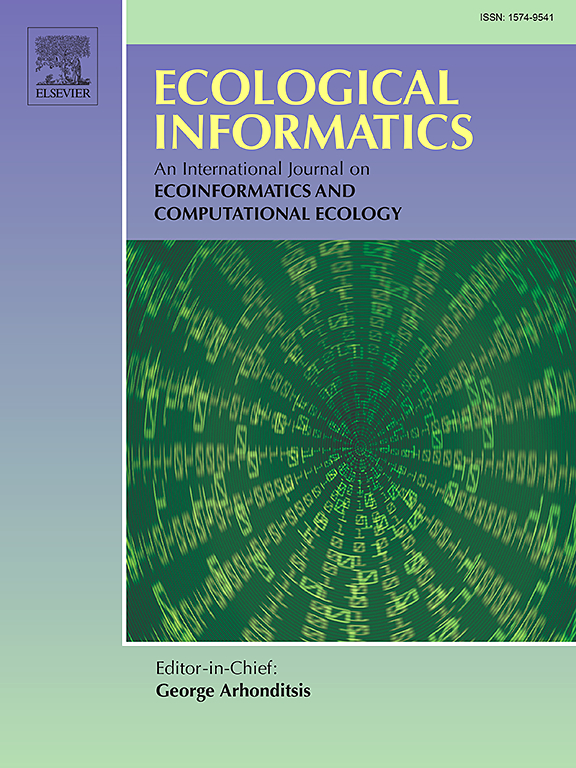Quantification of chlorophyll-a in inland waters by remote sensing algorithm based on modified equivalent spectra of Sentinel-2
IF 5.8
2区 环境科学与生态学
Q1 ECOLOGY
引用次数: 0
Abstract
The development of remote sensing algorithms has traditionally relied on satellite spectra or simulated equivalents derived from in-situ spectra to monitor inland water quality. However, such equivalent spectra often result in significant errors when retrieving chlorophyll-a (Chl-a) concentrations due to discrepancies between in-situ and satellite-derived spectra. In this research, the authors innovatively adjusted the red-light component of in-situ spectra for application in two inland waters, Dongzhang Reservoir and Jie Zhukou Reservoir. Sentinel-2 multispectral images (MSI), standard equivalent spectra (ES), and modified equivalent spectra (MES) were utilized as input data to assess models' effectiveness in terms of accuracy, robustness, and generalizability. The research applied Chl-a retrieval models including deep neural networks (DNN), extreme gradient boosting (XGB), and conventional statistical approaches with various spectral indices, such as the red-NIR method, the three-band method, and the normalized difference chlorophyll index (NDCI). The results revealed that the MES-based model achieved best results in Chl-a retrieval (RMSE = 2.04 mg/m3) comparable to MSI-based model (RMSE = 2.07 mg/m3) and ES-based model (RMSE = 7.71 mg/m3). Moreover, MES-based model behaved robustness and precision within selected water bodies and temporal periods. Notably, the integration of the red-NIR method with DNN was particularly effective in retrieving Chl-a with higher accuracy, robustness, and generalizability. Enhancement method to the equivalent spectra methodology provided by the research have reduced retrieval errors in retrieving Chl-a, and providing a valuable reference for future model development in this domain.

求助全文
约1分钟内获得全文
求助全文
来源期刊

Ecological Informatics
环境科学-生态学
CiteScore
8.30
自引率
11.80%
发文量
346
审稿时长
46 days
期刊介绍:
The journal Ecological Informatics is devoted to the publication of high quality, peer-reviewed articles on all aspects of computational ecology, data science and biogeography. The scope of the journal takes into account the data-intensive nature of ecology, the growing capacity of information technology to access, harness and leverage complex data as well as the critical need for informing sustainable management in view of global environmental and climate change.
The nature of the journal is interdisciplinary at the crossover between ecology and informatics. It focuses on novel concepts and techniques for image- and genome-based monitoring and interpretation, sensor- and multimedia-based data acquisition, internet-based data archiving and sharing, data assimilation, modelling and prediction of ecological data.
 求助内容:
求助内容: 应助结果提醒方式:
应助结果提醒方式:


